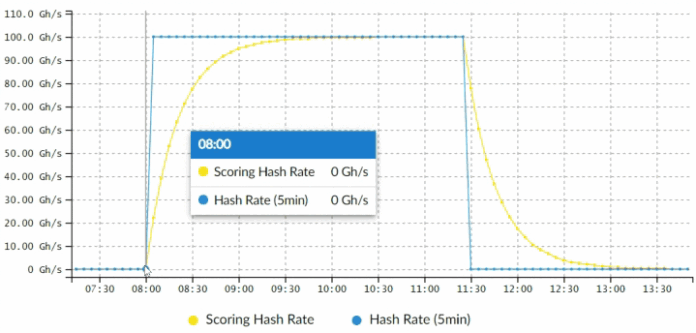Bitcoin mining has come a good distance for the reason that days of GPUs and basement set ups. In that point, miners have superior in numerous methods. For instance, ASICs at the moment are the usual, not GPUs. Moreover, enterprise grade gamers have entered the sector, opening new frontiers and bringing with them the dimensions and institutional recognition that opens the doorways to in any other case unreachable locations for smaller miners. These days, the mining panorama is one the place grid providers, curtailment methods, and power market participation are now not edge instances however core methods. Because the world round it has moved ahead, there’s one query we hold listening to from miners: can PPLNS adapt?
Many miners, significantly these working carefully with power suppliers or integrating Demand Response mechanisms, have come to view PPLNS with suspicion. They fear that it penalizes downtime and rewards solely uninterrupted hashrate—a foul deal for individuals who routinely curtail machines to assist the grid or present different providers.
This worry isn’t baseless. It traces again to a pivotal second within the mining trade’s current previous, one which apparently sealed the deal for a lot of on PPLNS fashion payouts: the fallout between RIOT and Braiins Pool.
On the time, Braiins was utilizing the Rating payout system. Designed in 2011 by Slush himself, Rating was engineered to resolve the issue of pool hopping—when miners would soar between swimming pools to take advantage of reward methods. There’s additionally been a false impression that Rating is a PPLNS fashion fee system, however as Rosenfeld’s bible on pool payout methods describes, Rating and PPLNS are distinctly completely different payout strategies. The primary distinction is how they account for shares, particularly, Rating applied a rolling window with exponential decay perform, this successfully made the lookback window very brief. However, PPLNS is a household of payout methods with numerous kinds of fastened size lookback home windows.
As proven on this archived web site of how Rating labored, you possibly can see that after 90 minutes your hashrate had no extra presence on the pool. Because of this the second a miner begins mining, their share of rewards pretty rapidly reaches the honest worth of the hashrate. However, when a miner stops mining, it drops equally quick, as proven on the gif under.

This may need labored effectively within the period of cowboys and hackers, but it surely was by no means designed with in the present day’s complicated mining environments in thoughts. Actually not with Demand Response, the place miners deliberately and profitably take machines offline to stabilize power grids or bid into ancillary markets. To Rating, that sort of habits appears to be like no completely different than a pool hopper—somebody trying to cheat the system.
So when RIOT left Braiins, citing considerations about payout mechanics, it despatched a shockwave by way of the mining world. Because of the aforementioned false impression, Rating system’s flaws received unfairly projected onto a broader class of payouts, PPLNS received caught within the fray, catching a stray bullet within the course of, and the trade collectively threw the child out with the bathwater.
However the mining world has modified, and it’s time for the phoenix to rise from his ashes.
SLICE: A Payout Mechanism for the twenty first Century Grid
Enter SLICE, a contemporary, open-source Stratum-V2-ready payout system created by the DMND staff. It’s an enchancment and evolution of PPLNS, that rethinks how miners receives a commission, rewards are calculated, and —most significantly— how downtime is handled respect
to Rating. All whereas preserving miner’s proper to construct their very own block templates with SV2.
At its core, SLICE is about equity and transparency. It preserves the foundational concept of PPLNS—paying miners in proportion to their precise contribution to fixing blocks—whereas modernizing it for in the present day’s decentralized mining panorama.
The important thing innovation lies in how SLICE buildings reward calculation, and on how the lookback window works. Reasonably than treating your complete pool as a monolith, SLICE breaks time into smaller, dynamic “slices” of labor to correctly distribute the payment element. These slices signify batches of shares submitted over a selected interval, the place we management for the quantity of charges within the mempool, and examine and rating completely different job templates for the monetary worth they signify. When a block is discovered, SLICE distributes the block subsidy and transaction charges individually. The subsidy is allotted proportionally by hashrate, whereas the charges are distributed based mostly on hashrate and monetary worth.
That is significantly related in a world the place miners can select their very own transaction units. Some miners might prioritize high-fee MEV-style bundles; others might exclude sure kinds of transactions for ideological, political or technical causes. SLICE ensures that, inside every slice, miners are rewarded in keeping with each the amount and high quality of their work—with out punishing them for downtime or strategic power choices. For these curious to be taught extra, this text can show useful.
Demand Response With out Penalty
What makes SLICE particularly engaging for miners taking part in Demand Response or curtailment applications is that it doesn’t penalize you for being offline.
That’s as a result of SLICE doesn’t decay your payout simply since you took a break. Your shares stay within the PPLNS window—the rolling window of current work that’s eligible for payouts—so long as they’re current sufficient. On this approach, every share is handled independently, and is predicted to get 8 payouts, since SLICE makes use of an 8-block rolling window, every legitimate share stays eligible for payout throughout the following 8 blocks on common. Because of this no matter how large or small the pool is, you’ll by no means have the abysmal luck of consuming up dangerous luck days with no block, disconnecting, having the pool discover a block, and never receives a commission.
Which means miners can energy down throughout peak demand hours, assist their regional grid, and nonetheless accumulate their honest minimize from blocks discovered after they resume operations, most significantly, even whereas they’re offline, if their shares are nonetheless within the window. In different phrases, if the pool has a streak of dangerous luck, after which the miner known as to carry out demand response and shuts off, even when the pool finds a block throughout their down time, that miner will receives a commission their justifiable share for on a regular basis they had been on-line. That’s as a result of every share generated throughout that point will probably be energetic and getting paid for 8 blocks on common.
This isn’t a workaround. That is the function. It makes SLICE totally appropriate with trendy power methods that require flexibility, whether or not you’re taking part in frequency regulation markets, ramping down throughout grid emergencies, or just optimizing for off-peak pricing.
For instance, let’s say {that a} miner is mining at a pool, and the pool hasn’t discovered that day’s block but. Because of this the pool hasn’t discovered the block but, and thus the miners hasn’t gotten paid for that day but. Now, the miner shuts off to supply ancillary providers throughout peak summer season load for a number of hours, throughout that point, the pool finds the block. In a Rating based mostly pool, the miner wouldn’t see a single Sat of that after 90 minutes, when the decay has had full impact. However even when the pool discovered a block half-hour later, because of the exponential decay, the miner would barely see something. However, the miner would have the entire shares they mined over the day obtain a fee, since every share receives on common 8 funds. Thus, the miner would profit within the good occasions, and never be penalized within the dangerous occasions.
Fee Transparency and Auditability
Moreover, SLICE doesn’t simply modernize payout equity—it does so in a approach that minimizes belief within the pool operator. Each slice is totally auditable. Every share is tracked, listed, and publicly verifiable by any miner, so miners can independently confirm their share of the block reward. There’s no black field, no “belief me bro.”
And if the pool operator makes an attempt to cheat—say, by injecting pretend shares to dilute payouts—miners can problem the integrity of the slice. The Job Declaration extension to Stratum V2, which SLICE depends on, contains mechanisms for publishing share information, verifying Merkle roots, and making certain that every share corresponds to actual computational work.
For miners who care about decentralization, SLICE isn’t only a fee scheme—it’s an accountability instrument.
From Defensive to Strategic
The shift from Rating to SLICE represents greater than a technical improve. It’s a psychological shift. Mining swimming pools now not must defend towards dangerous actors by penalizing everybody. As a substitute, they’ll construction payouts in a approach that displays actuality: that miners are refined individuals working not solely within the Bitcoin blockchain, but additionally the power ecosystem.
With SLICE, PPLNS stops being a legal responsibility and turns into a strategic benefit. It permits higher income seize, extra transparency and auditability, and smoother integration with grid providers.
And in a world the place uptime is non-compulsory, however equity is non-negotiable, that’s precisely what enterprise-grade miners want, a strategic pool companion that pushes ahead and innovates, bringing the long run in the present day and enabling miners to make more cash with the identical {hardware}.
This can be a visitor submit by Basic Kenobi. Opinions expressed are solely their very own and don’t essentially replicate these of BTC Inc or Bitcoin Journal.

